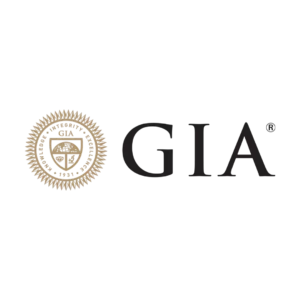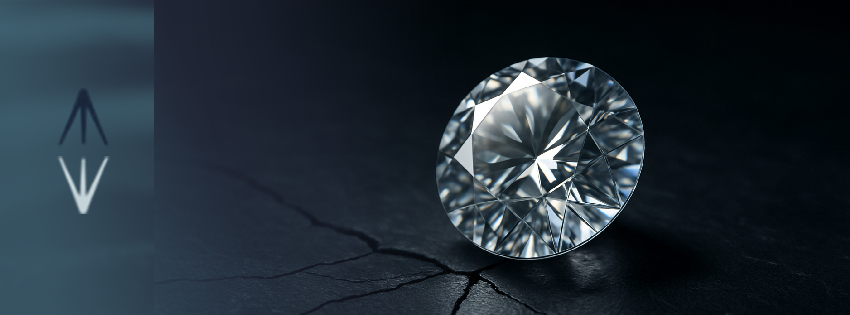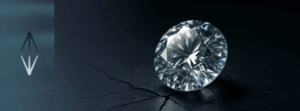Myths and Realities about the Hardness and Fragility of Gems
The diamond is famous for being the hardest natural material known; however, “hard” does not mean “indestructible.” Below, we debunk the most common myths and explain why a diamond can be scratched, fractured, or even burn under the right conditions.
1. Hardness ≠ Tenacity: two different concepts
-
Hardness (Mohs scale): resistance to being scratched.
-
Tenacity: ability to resist impacts or fractures.
A diamond is extremely hard (10 Mohs), but its tenacity is moderate; an impact in the right direction can split it along its cleavage planes.
2. Hardness Comparison Table (Mohs Scale)
| Mineral / Material | Mohs Hardness | What can scratch it? |
|---|---|---|
| Talc | 1 | Everything |
| Gypsum | 2 | Fingernail, copper |
| Calcite | 3 | Knife |
| Fluorite | 4 | Hardened steel |
| Apatite | 5 | Glass |
| Orthoclase (feldspar) | 6 | Steel file |
| Quartz | 7 | SiC sandpaper |
| Topaz | 8 | Corundum |
| Corundum (sapphire) | 9 | Diamond |
| Diamond | 10 | Another diamond, nano-diamonds (e.g., ADNR) |
Main source: GIA’s guide to the Mohs scale and gemological durability. GIA 4Cs
3. So… what can damage or break a diamond?
| Factor / Material | Mechanism | Practical Risk |
|---|---|---|
| Another diamond | Direct scratching (polishing, friction between jewelry) | High if gems are stored together |
| Hard blow on a cleavage plane (hammer, fall onto a hard floor) | Fracture or chipping | Moderate–high; a well-aimed impact is enough |
| Extreme heat ≥ 850 °C | Combustion (diamond burns and turns into CO₂) | Low, but possible in fires or goldsmithing |
| High-power laser | Industrial cutting and shaping | Controlled in workshops |
| Nano-diamonds / ADNR (hyperdiamond) | Material harder than conventional diamond; can scratch it in a lab | Theoretical/industrial |
| Internal defects (large inclusions, cracks) | Decrease tenacity and facilitate breakage | Variable; gems with inclusions are more exposed |
Key sources: GIA care guide (combustion at 850 °C) and studies on aggregated diamond nanorods (ADNR) as ultrahard materials. gia.eduWikipediaGIA 4Cs

4. Common Myths Debunked
-
“Nothing can scratch a diamond.”
Only other diamonds (or materials with superior hardness, like ADNR) can scratch it, but they do exist. -
“A diamond cannot be broken.”
It can fracture with a simple hammer if the blow strikes its cleavage plane. -
“Fire does not affect a diamond.”
Starting from ~850 °C, it burns and turns into carbon dioxide; damage has been documented in house fires. -
“Diamonds are eternal, no matter what.”
They are extremely durable, but they require care: protect them from impacts, store them separately, and avoid extreme temperatures.
5. How to Protect Your Diamond
-
Individual storage: prevent it from rubbing against other gems.
-
Secure mountings: protective settings (bezels, robust four-prongs).
-
Periodic check-ups: a professional jeweler can detect micro-cracks.
-
Caution with heat: remove the jewelry before soldering, cooking over an open flame, or using thermal tools.
Conclusion
The diamond is, without a doubt, nature’s hardest gem, but it is not invincible. Understanding the difference between hardness and tenacity helps to demystify its apparent indestructibility. With proper care, your diamond will continue to shine for generations… as long as you treat it like the precious—and not indestructible—jewel it truly is.
Frequently Asked Questions (FAQ)
-
Can a diamond be scratched?
Only another diamond—or ultrahard lab materials—can scratch it, but it is possible if gems rub against each other. -
Can a diamond break from an impact?
Yes. Although it is the hardest material, a direct impact on its cleavage plane can fracture or chip it. -
Does fire damage diamonds?
At temperatures above 850 °C, a diamond can oxidize and turn into carbon dioxide; damage has been documented in fires. -
What is the difference between hardness and tenacity?
Hardness is resistance to scratches (Mohs scale = 10). Tenacity is resistance to impacts; in diamonds, it is moderate, which is why they can break. -
How to protect diamond jewelry?
Store it separately, avoid impacts and extreme heat, and have the mounting periodically checked by a professional jeweler.




